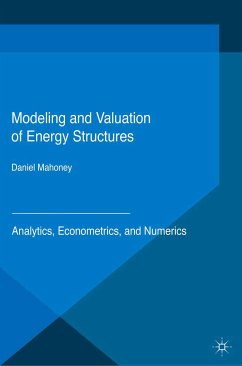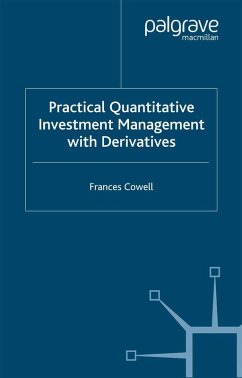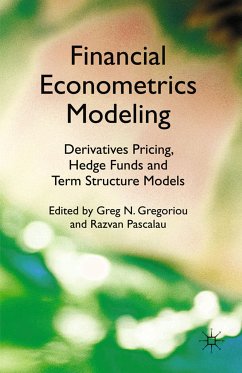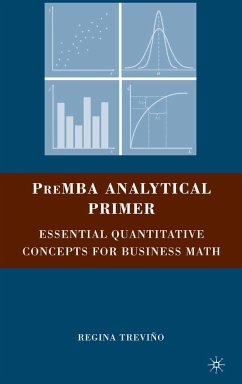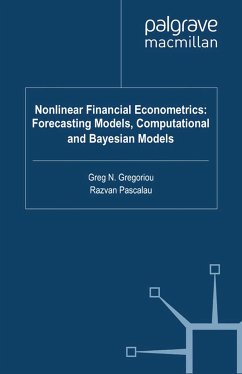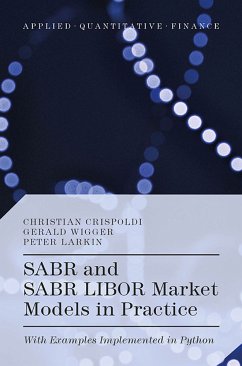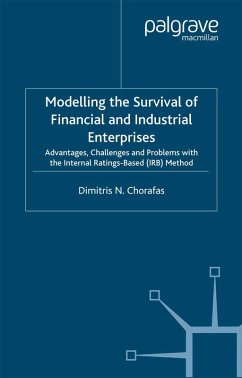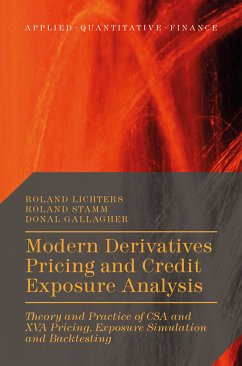
Modern Derivatives Pricing and Credit Exposure Analysis (eBook, PDF)
Theory and Practice of CSA and XVA Pricing, Exposure Simulation and Backtesting

PAYBACK Punkte
36 °P sammeln!






This book provides a comprehensive guide for modern derivatives pricing and credit analysis. Written to provide sound theoretical detail but practical implication, it provides readers with everything they need to know to price modern financial derivatives and analyze the credit exposure of a financial instrument in today's markets.
Dieser Download kann aus rechtlichen Gründen nur mit Rechnungsadresse in A, B, BG, CY, CZ, D, DK, EW, E, FIN, F, GR, HR, H, IRL, I, LT, L, LR, M, NL, PL, P, R, S, SLO, SK ausgeliefert werden.
Roland Lichters has headed bank Risk and IT departments - building teams, processes, pricing/risk methodologies and systems. As founding Partner of Quaternion Risk Management, responsible for R&D, he focusses - besides his consulting and advisory work - on the company's QuantLib-based pricing and risk analytics products, implementing the methods covered in this book. Roland holds a PhD and Diploma in Physics and lectures part-time in Financial Engineering at Trinity College Dublin. Roland Stamm held senior positions in a number of banks' IT and Risk Management departments before joining Quaternion Risk Management as a Partner. In his banking work, he focused on market and credit risk methodology as well as the pricing and risk management of complex financial products. Roland holds a PhD in Mathematics and is co-author of the book Discounting, LIBOR, CVA and Funding (with Chris Kenyon) as well as a part-time lecturer. Donal Gallagher is a founding Partner and Managing Director of Quaternion Risk Management and advises CFOs and CROs on the transparent pricing, risk and capital management of complex financial instruments. His research interests include default models and portfolio credit products. Donal holds a PhD from the California Institute of Technology in Applied Mathematics and lectures part time in Financial Engineering at Trinity College Dublin.
Produktdetails
- Verlag: Palgrave Macmillan UK
- Seitenzahl: 466
- Erscheinungstermin: 15. November 2015
- Englisch
- ISBN-13: 9781137494849
- Artikelnr.: 44902696
'The authors are established practitioners with many years of quant development and implementation experience in leading financial institutions. This is well reflected in the present book, rich with useful examples and covering highly relevant topics such as (among many others) real world RFE models and backtesting, normally left out by the main-stream financial literature.'
-Fabrizio Anfuso, Head of Collateralized Exposure Modelling, Credit Suisse; Visiting Lecturer, ETH Zurich and Bocconi University Milan
"The authors have achieved a matchless combination of theoretical and most importantly, practical expertise to this book. The work is complete, insightful and exact and is suitable for all professionals dealing with XVA
-Fabrizio Anfuso, Head of Collateralized Exposure Modelling, Credit Suisse; Visiting Lecturer, ETH Zurich and Bocconi University Milan
"The authors have achieved a matchless combination of theoretical and most importantly, practical expertise to this book. The work is complete, insightful and exact and is suitable for all professionals dealing with XVA
Mehr anzeigen
expert and novice alike."
-Jörg Kienitz, Director and Co-Lead Quant Unit and Adjunct Associate Professor University of Cape Town
'Modern Derivatives Pricing and Credit Exposure Analysis by Lichters, Stamm and Gallagher (with whom I have collaborated) has unique strengths. There are three chapters developing discounting from a CCP point of view, a global view and a CSA-based view. There is a fully worked out multi-asset framework based on the Linear Gaussian Model (LGM) with particular depth on inflation with both Jarrow-Yildrim and Dodgson-Kainth models. It provides a forensically detailed analysis of credit processes, mapping their limitations and highlights directions that avoid them (developed in detail from thePeng-Kou approach). The XVA coverage starts with CVA/DVA and is followed by separate chapters on FVA and KVA. The usual limitations for such a comprehensive book are present, e.g. limited treatment of smile modelling in a multi-curve setup (worth a book by itself), and limited coverage of the trade-offs in XVA between the costs of hedging risks and the (capital and modelling) costs of open risks (often forced by credit market limitations). Overall, this is a thorough and practical introduction to modern derivatives pricing."
-Chris Kenyon, front office quant; author of 10 papers in the Cutting Edge section in Risk
-Jörg Kienitz, Director and Co-Lead Quant Unit and Adjunct Associate Professor University of Cape Town
'Modern Derivatives Pricing and Credit Exposure Analysis by Lichters, Stamm and Gallagher (with whom I have collaborated) has unique strengths. There are three chapters developing discounting from a CCP point of view, a global view and a CSA-based view. There is a fully worked out multi-asset framework based on the Linear Gaussian Model (LGM) with particular depth on inflation with both Jarrow-Yildrim and Dodgson-Kainth models. It provides a forensically detailed analysis of credit processes, mapping their limitations and highlights directions that avoid them (developed in detail from thePeng-Kou approach). The XVA coverage starts with CVA/DVA and is followed by separate chapters on FVA and KVA. The usual limitations for such a comprehensive book are present, e.g. limited treatment of smile modelling in a multi-curve setup (worth a book by itself), and limited coverage of the trade-offs in XVA between the costs of hedging risks and the (capital and modelling) costs of open risks (often forced by credit market limitations). Overall, this is a thorough and practical introduction to modern derivatives pricing."
-Chris Kenyon, front office quant; author of 10 papers in the Cutting Edge section in Risk
Schließen
Für dieses Produkt wurde noch keine Bewertung abgegeben. Wir würden uns sehr freuen, wenn du die erste Bewertung schreibst!
Eine Bewertung schreiben
Eine Bewertung schreiben
Andere Kunden interessierten sich für



